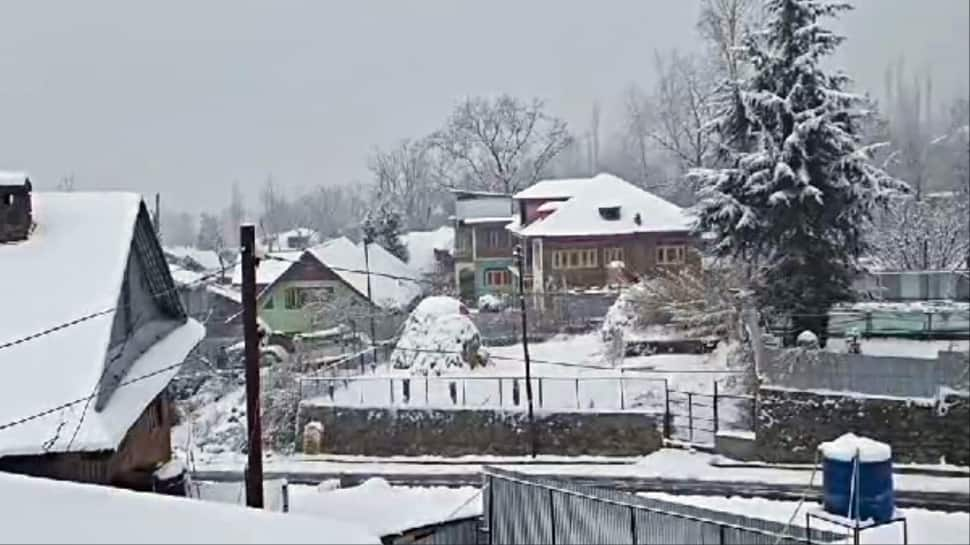 |
|
The Kashmir Valley recently experienced a significant snowfall, the second in just 15 days, causing widespread disruption to transportation and delighting tourists simultaneously. This unexpected weather event led to the closure of several major highways and significantly impacted flight operations at the local airport. Airport authorities were forced to reschedule morning flights until noon due to dense fog resulting from the heavy snowfall, causing considerable inconvenience to travelers. While the Jammu Kashmir National Highway eventually reopened to traffic, other crucial routes, including the Mughal Road, Sinthan Road, Zojila Pass, and Gurez Road, remained closed, effectively isolating several regions within the valley. The sheer volume of snowfall varied across the region. While many areas received significant accumulation, higher altitudes and hill stations like Gulmarg and Sonamarg experienced particularly heavy snowfall, with reports exceeding 20 inches in some areas. This substantial snowfall transformed these picturesque locations into stunning winter wonderlands, attracting numerous tourists and creating a magical atmosphere.
The India Meteorological Department (IMD) played a crucial role in forecasting the snowfall. Their predictions, made prior to the event, accurately anticipated the western disturbance that would bring heavy snowfall to the region from January 4th to 6th. IMD scientist Mukhtar Ahmad confirmed their earlier predictions, noting that North Kashmir received the heaviest snowfall. While the weather was predicted to improve by the evening, a significant drop in nighttime temperatures was also anticipated. This drop in temperature is expected to continue until the 15th of January, after which another western disturbance is anticipated, suggesting the possibility of more snowfall in the coming weeks. The current Western Disturbance intensified yesterday afternoon, bringing heavy snowfall to various parts of Kashmir, including the higher reaches of North Kashmir, Ganderbal district, the Sonmarg-Pahalgam axis, and the Zojila-Drass-Minimarg axis. The intense cold wave gripping Srinagar, a direct consequence of the snowfall, saw maximum temperatures plummeting to a mere 0.5 degrees Celsius. Gulmarg and Pahalgam recorded even lower temperatures, with minus 4.5 degrees and minus 1.4 degrees Celsius respectively. These exceptionally low temperatures highlight the harsh winter conditions currently experienced in the region, further emphasizing the challenges posed by the recent snowfall.
The current weather conditions are particularly impactful given that Kashmir is currently experiencing ‘Chillai Kalan,’ a 40-day period characterized by extreme cold and harsh winter weather. The IMD has issued a further warning, predicting a 4-5°C drop in nighttime temperatures in the coming days, underlining the severity of the situation and emphasizing the need for residents and visitors to prepare for persistently low temperatures. Amidst the challenges and disruptions, the snowfall has brought undeniable joy to tourists visiting Kashmir. Many tourists, such as Akash Trivedi from Rajasthan, expressed immense satisfaction at witnessing the snowfall, describing the experience as a dream come true. His account illustrates the positive impact the snowfall has had on the tourism industry, bringing a sense of wonder and excitement to visitors despite the challenges presented by the extreme weather conditions. The picturesque scenery of snow-covered landscapes, especially in areas such as Gulmarg, Sonamarg, and along the banks of Dal Lake, has created a truly enchanting winter wonderland. These breathtaking views have counteracted the disruptions caused by the adverse weather, transforming them into an attractive feature for tourists seeking a unique winter experience. This highlights the delicate balance between the challenges and opportunities presented by extreme weather events in a region heavily reliant on tourism.
Source: J&K: Fresh Snowfall Blankets Kashmir; Flights Affected, Highways Closed Due To Dense Fog
